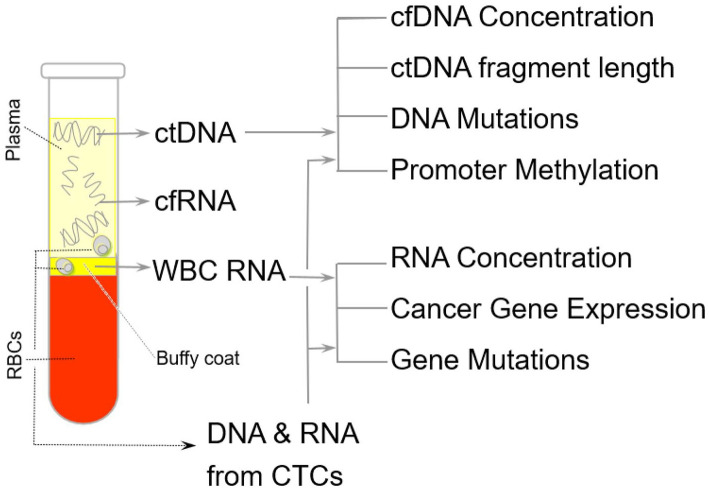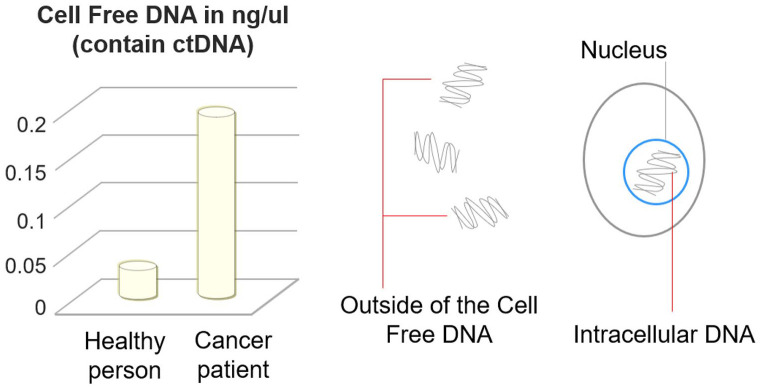液体活检:癌症诊断和预后的独特方法。
IF 2.5
Q2 MATHEMATICAL & COMPUTATIONAL BIOLOGY
引用次数: 23
摘要
癌症是全世界发病率和死亡率的主要原因。在过去的几十年里,精确癌症医学的概念已经成为肿瘤学领域的一种新方法,旨在根据每位癌症患者的肿瘤基因特征为每位癌症患者量身定制最有效的治疗方案。近年来,组织活检已成为癌症治疗的重要组成部分,并被广泛用于肿瘤的表征。然而,组织活检技术面临着不同的挑战,因为它们的侵入性、成本、时间,以及由于组织异质性而导致的潜在采样困难。为了克服这些问题,一种非侵入性的方法被开发出来,即液体活检。这是一种简单、快速、有价值的技术,基于对血浆中循环肿瘤DNA (cfDNA的一部分)、循环肿瘤细胞(ctc)和其他肿瘤来源物质的分析。本文综述了液体活检的概念,并简要讨论了ctDNA和CTC分析作为癌症早期诊断和预后工具的作用。在这篇综述中,我们还推测了液体活检相对于组织活检的优势,并假设液体活检可能是一种全面的方法,可以克服目前与昂贵、侵入性和耗时的组织活检相关的局限性。本文章由计算机程序翻译,如有差异,请以英文原文为准。



Liquid Biopsy: A Distinctive Approach to the Diagnosis and Prognosis of Cancer.
Cancer is a leading cause of morbidity and mortality worldwide. Over the past decades, the concept of precision cancer medicine has emerged as a novel approach in the field of oncology that aims to tailor the most effective treatment options to each individual cancer patient based on the genetic profile of the tumor of each individual patient. Recently, tissue biopsy has become an essential part of cancer care and is widely used to characterize the tumor. However, tissue biopsy techniques face different challenges due to their invasiveness, cost, time, and adversity in potential sampling due to tissue heterogeneity. To overcome these issues, a non-invasive approach has developed, which is known as liquid biopsy. It is a simple, fast, and worthwhile technique based on the analysis of circulating tumor DNA (which is a fraction of cfDNA), circulating tumor cells (CTCs), and other tumor-derived material in blood plasma. This review provides an overview of the concept of liquid biopsy and briefly discusses the role of ctDNA and CTC analysis as tools for early diagnosis and prognosis of cancer. In this review, we also speculate on the advantages of liquid biopsy as opposed to tissue biopsy and postulate that liquid biopsy may be a comprehensive approach to overcome the current limitations associated with costly, invasive, and time-consuming tissue biopsy.
求助全文
通过发布文献求助,成功后即可免费获取论文全文。
去求助
来源期刊

Cancer Informatics
Medicine-Oncology
CiteScore
3.00
自引率
5.00%
发文量
30
审稿时长
8 weeks
期刊介绍:
The field of cancer research relies on advances in many other disciplines, including omics technology, mass spectrometry, radio imaging, computer science, and biostatistics. Cancer Informatics provides open access to peer-reviewed high-quality manuscripts reporting bioinformatics analysis of molecular genetics and/or clinical data pertaining to cancer, emphasizing the use of machine learning, artificial intelligence, statistical algorithms, advanced imaging techniques, data visualization, and high-throughput technologies. As the leading journal dedicated exclusively to the report of the use of computational methods in cancer research and practice, Cancer Informatics leverages methodological improvements in systems biology, genomics, proteomics, metabolomics, and molecular biochemistry into the fields of cancer detection, treatment, classification, risk-prediction, prevention, outcome, and modeling.
 求助内容:
求助内容: 应助结果提醒方式:
应助结果提醒方式:


